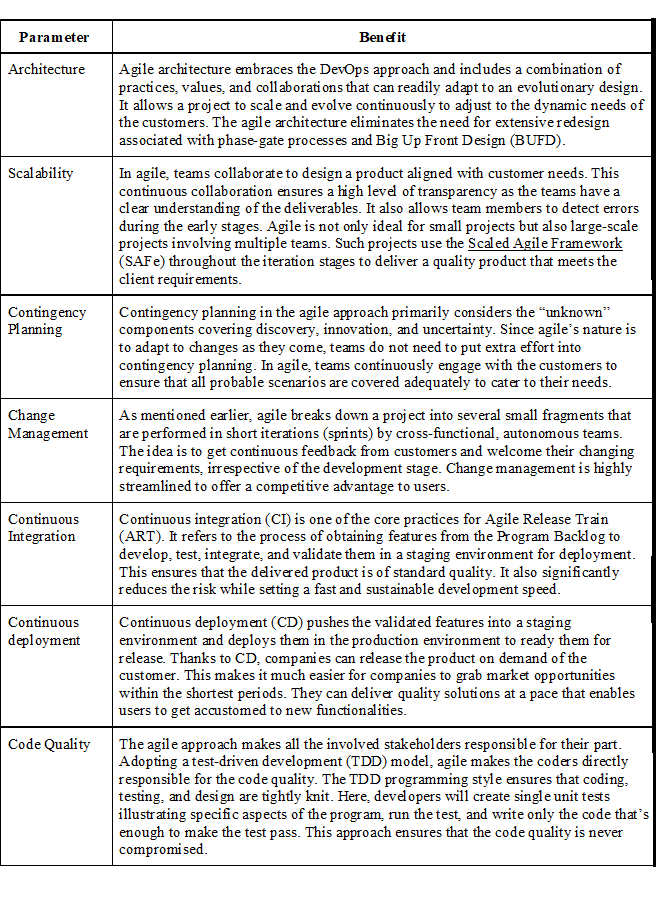The look and feel of apps today is changing continuously, not to mention the fact that apps often introduce new features in a bid to stay relevant. As a result, there is a clear need for quick software deployment and rapid response development. If time were the only factor, the market would have certainly been much easier to crack. However, tough competition, the need to maintain productivity, and budget constraints, demand a lean and optimized methodology and corresponding cost management. As a result, agile methodology – as an approach to project management – is finding increasing popularity in the software development sector. Some studies have found agile projects to work out 4 times cheaper than the traditional waterfall method-driven projects.
What is the “agile” methodology?
Agile methodology is completely different from the traditional waterfall methodology in its focus – it focuses on creating a fully functioning app software rather than heavy documentation. Unlike the waterfall methodology, in agile, goals take precedence over processes. The end goal is to ensure that users get to enjoy the perks of a functional application and a stellar user experience.
While long-term project plans aimed at predicting costs and timelines are a mainstay of the waterfall methodology, agile attempts to predict the scope of a given app project, ever-ready to adapt to the technological and market changes. Thus, agile primarily focuses on using short-term plans. The project is broken down into short timespans, usually about 4 weeks long, known as sprints. Within this easily foreseeable future, the complexity of design and planning is substantially reduced, leaving much breathing space for maintaining product quality.
Besides, agile team structures are also not unnecessarily complex. This is what an agile team looks like:
- The Product Owner oversees the team’s daily work and ensures that backlogs are closed
- The Scrum Master is responsible for ensuring that agile values – as discussed above – are being met. They are also responsible for overlooking the team’s performance and resolving the issues that arise.
- The Team Members are responsible for the whole chain of the development process from design to coding to testing, and also, acceptance. That’s right, with the goal specified reading ‘functional software’ rather than ‘approval from so-and-so’ the onus falls on the development team to ensure that their work is up to speed. You know the proverb about great power and great responsibility.
One of the other key values of the agile methodology is that the entire team operates from one location. They also have daily ‘scrum meets’ where the backlogs and tasks competition of the previous day is discussed. Backlogs are picked up first, and then the work proceeds. The entire team is clear on what is going on in every proverbial corner of the project.
This is essential to agility as you might note in the benefits that we’re about to discuss.
What are the benefits of the agile methodology?
There are tremendous benefits to be reaped from applying the agile methodology to mobile app development. Here’s a table depicting the various benefits of an agile methodology based on the core parameters:

Does agile methodology increase project costs: Myth or Fact?
Unfortunately, there is no yes and no answer to this question. It is not purely black or white, but rather more of a grey area. During the initial stages, the upfront cost for adopting the agile methodology is usually substantial. However, project costs travel on a downward trajectory once an app is released to the market. Although statistics related to the adoption methodology are lacking and sometimes contradict each other, the larger picture approach, which is intrinsic to agile methodology allows for cost avoidance and cost savings.
In agile methodology, cost-saving occurs across:
- Software development
- Integration and testing
- Deployment
- Training
- Sustainment
- Program management
Sustainment is where you get the maximum opportunity and scope to cut costs and save in the agile development cycle. Two specific areas of benefits in sustainment are reduced defects and reduced need for post-appointment enhancements.
Since different teams collaborate to handle all of the functions listed above, there are no sudden additional or incremental costs midway through the product’s lifecycle. The end-to-end control and responsibility granted to them also result in fewer defects and a lower likelihood for post-launch enhancements to the app. Of course, keeping pace with trends and market demands is non-negotiable. However, the need to make enhancements because some other stakeholder is displeased is eliminated.
To conclude...
It is safe to say that the agile methodology calls for higher upfront investment in return for lower long-term costs during the process of mobile app development. But the savings only come to fruition when the app reaches a point where costs are minimal even while the app is popular. In other words, the keyword here is ‘long-term’.




